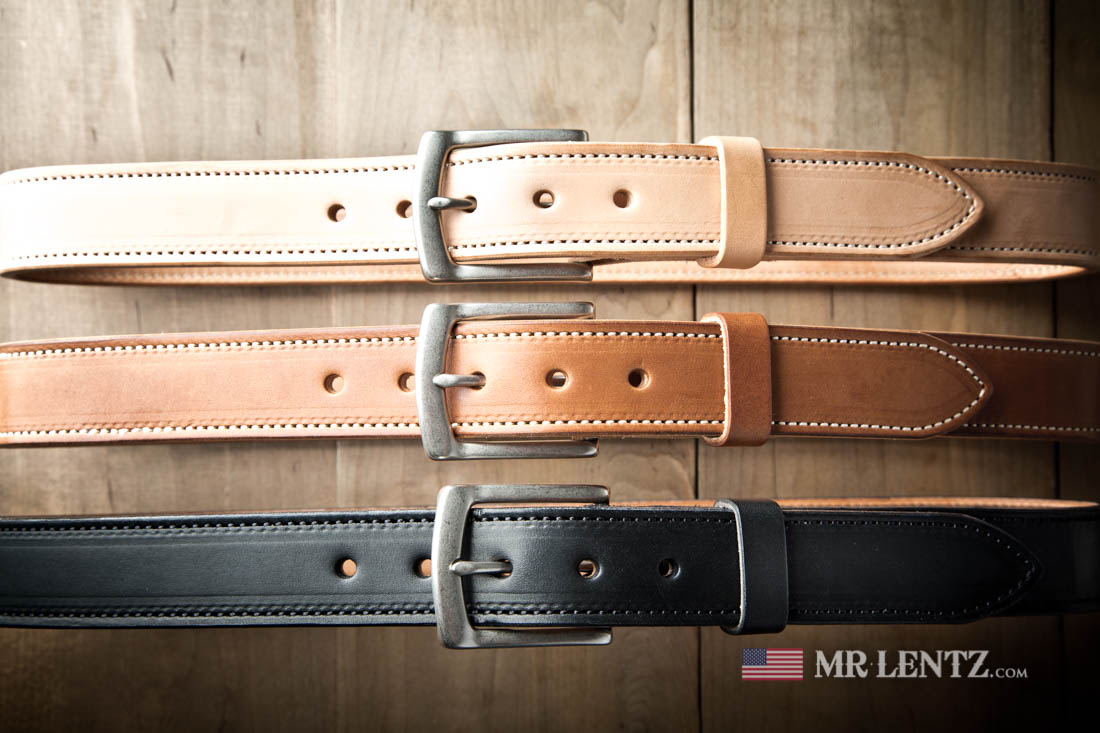Everything, Leather
Lined Leather Belts Getting Stitched up
Heavy Duty Belts Require Heavy Duty Stitchers
In the workshop I use a very heavy duty stitcher capable of binding 1/2 inch worth of leather together. Now, my lined leather belts aren’t quite that thick luckily! This one shown in the video above is about 1/4 inch. It takes a lot of power to get through that much leather and equally I use an extremely durable type of thread. You know how on most mass-produced belts sold in the big department stores you will see them stitched with the tiniest of threads? Well, on my handmade belts I use thread that’s about 3 times thicker. It’s UV resistant and typically used to keep massive sails together on sailboats.
Getting Started With Leather Stitching
It’s not easy to get one of these heavy duty leather stitchers running correctly. In fact the learning curve is probably the steepest I have ever experienced in the world of leather crafting. Initially when I set out to learn the ropes – I would stitch a few items, the thread would get stuck, jam up the machine and I would have to stop to take it apart and start over again. There was also the issue of the stock motor that comes with it – it wants to keep driving after you may want to put the brakes on! And then there’s getting used to the speed of it, when turned all the way down to a crawl there usually isn’t enough power to go through this thick of leather.
I kept at it for weeks on end, climbing that steep learning curve. Researching by night on the forums, calling the manufacturer, and consulting with other pros. The reality is that there really isn’t anyone around that can just come and give you a lesson on this beast, you just gotta put in the time and learn how to operate it.
In the end I figured out all of the various reasons that cause the thread to tear and jam up the components.
Reasons Why Thread Tears
- Needle size
- Needle Sharpness
- Thread size
- Speed setting
- Burrs on Metal components near thread
- Type of leather being stitched
- Technique of sewing curves
- Properly starting a stitch
I would usually give up sometime after solving a few of those items, but not the others. Then I would go back at it again weeks later and tackle a few more issues.
Motor Issues on Leather Stitcher
The stock motor that comes with these machines are ok…but they will make things much tougher to learn on even if you get the one that supposedly can stop and backstitch into the exact same holes. Eventually I took off that device and replaced the entire motor. I also changed the gear configuration so that the motor can operate very very slowly with very very high power. Think tiny spindle on the motor connected to the largest spindle on the machine. This is very important when stitching leather. You need to go slowly. Technically these machines can stitch around 20 feet per second…that’s fast…way too fast. With leather, one mistake may mean you have to start entirely over.
New Line of Belts
After mastering the use of this machine (that’s a half joke as there is always something more to learn!), I developed a wide range of lined leather belt designs. The first one to hit the shop is this lined leather belt below:

They are the slickest belts you will ever own. I hand slick and wax the edges, polished up to a glassy sheen. The buckles are all solid brass as with the snap or screw hardware.
I have a full range of belt options on this page here. Come on down and take a look.

